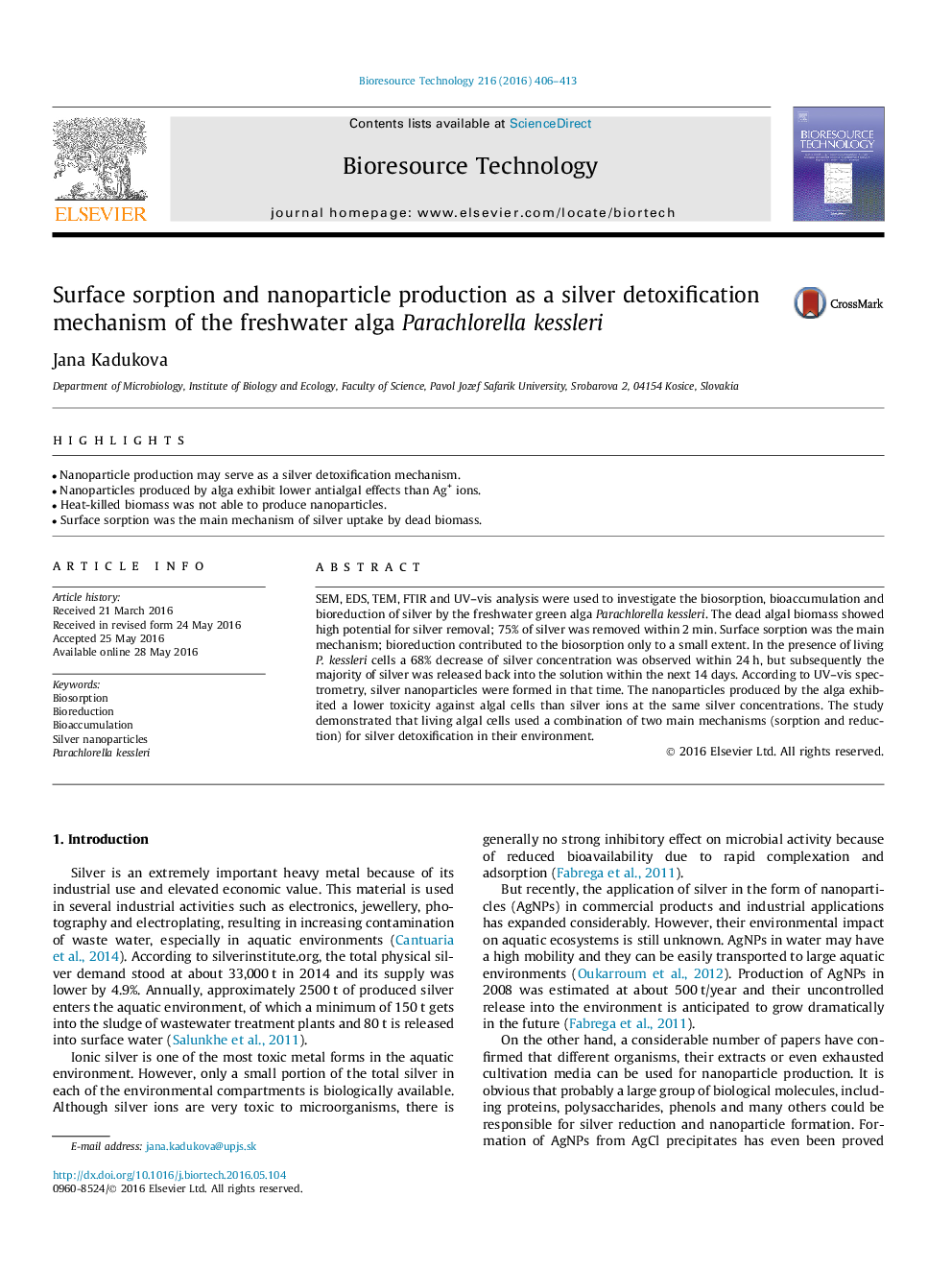| Article ID | Journal | Published Year | Pages | File Type |
|---|---|---|---|---|
| 7071024 | Bioresource Technology | 2016 | 8 Pages |
Abstract
SEM, EDS, TEM, FTIR and UV-vis analysis were used to investigate the biosorption, bioaccumulation and bioreduction of silver by the freshwater green alga Parachlorella kessleri. The dead algal biomass showed high potential for silver removal; 75% of silver was removed within 2Â min. Surface sorption was the main mechanism; bioreduction contributed to the biosorption only to a small extent. In the presence of living P. kessleri cells a 68% decrease of silver concentration was observed within 24Â h, but subsequently the majority of silver was released back into the solution within the next 14Â days. According to UV-vis spectrometry, silver nanoparticles were formed in that time. The nanoparticles produced by the alga exhibited a lower toxicity against algal cells than silver ions at the same silver concentrations. The study demonstrated that living algal cells used a combination of two main mechanisms (sorption and reduction) for silver detoxification in their environment.
Related Topics
Physical Sciences and Engineering
Chemical Engineering
Process Chemistry and Technology
Authors
Jana Kadukova,
